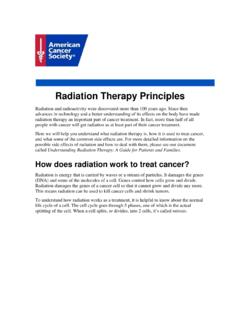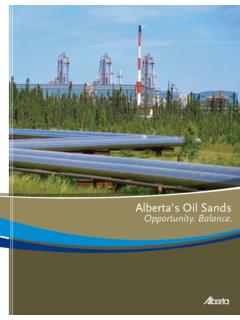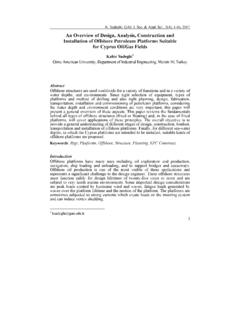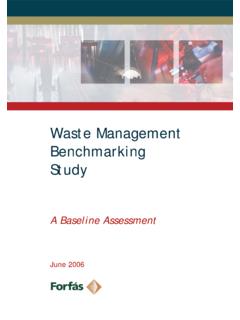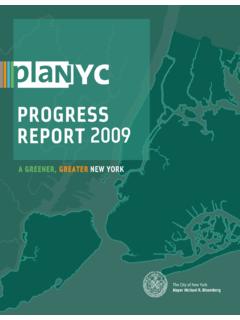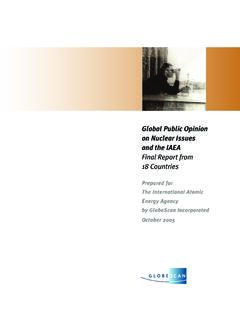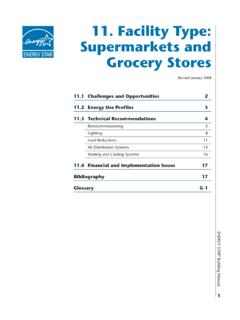Transcription of Lighting Efficiency - Stanford University
1 Page | 1 April 2011 Lighting Efficiency CLIMATE TECHBOOK Quick Facts Lighting accounts for about 11 percent of energy use in residential buildings and 18 percent in commercial buildings. Both conserving Lighting use and adopting more efficient technologies can yield substantial energy savings. Some of these technologies and practices have no up-front cost at all, and others pay for themselves over time in the form of lower utility bills. In addition to helping reduce energy use, and therefore greenhouse gas emissions, other benefits may include better reading and working conditions and reduced light pollution. New Lighting technologies are many times more efficient than traditional technologies such as incandescent bulbs, and switching to newer technologies can result in substantial net energy use reduction , and associated reductions in greenhouse gas emissions.
2 A 2008 study for the Department of energy (DOE) revealed that using light emitting diodes (LEDs) for niche purposes in which it is currently feasible would save enough electricity to equal the output of 27 coal power plants. Background Nearly all of the greenhouse gas (GHG) emissions from the residential and commercial sectors can be attributed to energy use in buildings (see CLIMATE TECHBOOK: Residential and Commercial Sectors Overview). Embodied energy which goes into the materials, transportation, and labor used to construct the building makes up the next largest portion. Even so, existing technology and practices can be used to make both new and existing buildings significantly more efficient in their energy use, and can even be used in the design of net zero energy buildings buildings that use design and Efficiency measures to reduce energy needs dramatically and rely on renewable energy sources to meet remaining demand.
3 The energy Independence and Security Act of 2007 (EISA 2007) calls for all new commercial buildings to be net zero energy by An integrated approach provides the best opportunity to achieve significant GHG reductions because no single building component can do so by itself and different components often interact with one another to influence overall energy consumption (see CLIMATE TECHBOOK: Buildings Overview). However, certain key building elements can play a significant role in determining a building s energy use and associated GHG emissions. Lighting accounts for about 11 percent of energy use in residential buildings and 18 percent in commercial buildings, which means it uses the second largest amount of energy in buildings after heating, ventilation, and air conditioning (HVAC) systems (see Figure 1).
4 2 Page | 2 April 2011 Lighting Efficiency CLIMATE TECHBOOK Figure 1: Residential Buildings Total energy End-Use (2008) Source: Department of energy , 2010 Buildings energy Data Book, Section , 2010. Adjustments to Lighting systems can be straightforward and achieve substantial cost savings. Consequently, addressing Lighting can be a simple way to reduce a building s energy use, and related GHGs, in a cost-effective manner. Reducing energy use from artificial Lighting can be achieved in two ways: Conservation Conservation efforts minimize the amount of time that lights are in use and can include behavioral change, building design, and automation, such as timers and sensors.
5 Efficiency Efficiency improvements reduce the amount of energy used to light a given space, generally using a more efficient Lighting technology. Description This section briefly describes some of the most common ways to reduce the amount of energy consumed by Lighting systems. The following options illustrate a range of conservation options from small adjustments in daily habits to larger building design elements that can reduce the use of artificial Lighting : Behavioral Change Turning off lights when they are not being used reduces energy use, GHG emissions from electricity, and utility bills. This practice may include turning off lights in unoccupied rooms or where there is adequate natural light.
6 Adjusting artificial light output can also provide energy savings; for example, using task Lighting ( , a desk lamp) rather than room Lighting can reduce the number of fixtures in use, and dimmers allow lights to be used at maximum capacity when necessary and at low capacity HVAC 41%Water Heating 14% Lighting 11%Electronics & Computers 13% refrigeration 6%Cooking 4%Other 8%* 3%* This chart includes an adjustment factor used by the EIA to reconcile two datasets. Page | 3 April 2011 Lighting Efficiency CLIMATE TECHBOOK when less light is needed, such as for safety Lighting , mood Lighting , or when some daylight is Technologies that reduce Lighting use Timers and sensors can reduce light usage to the necessary level; these options use technology to mimic the behavior described above.
7 Sensors come in a variety of models that serve different purposes, and certain types of sensors and light fixtures are more appropriate together than others. For example, lamps that take a long time to start are not suitable for sensors that turn off and on frequently. o Occupancy sensors help ensure that lights are only on when they are being actively used. Infrared sensors can detect heat and motion, and ultrasonic sensors can detect sound. Both must be installed correctly to ensure that they are sensitive to human activity rather than other activity in the vicinity (such as ambient noise). Some estimates suggest that occupancy sensors can reduce energy use by 45 percent, while other estimates are as high as 90 ,5 o Photosensors use ambient light to determine the level of light output for a fixture.
8 For example, photosensors might be used to turn outdoor lights off during daylight hours. Improving building design to maximize natural light Building designs that incorporate a substantial amount of natural light also reduce the need for artificial Lighting ; in these cases, artificial light may become a supplement for use during the night or when otherwise needed. Architects and land planners can play a role by designing buildings to include skylights or windows and orienting these toward the south or west. Designers and building occupants can choose light paint colors that maximize reflectance, and they can orient furniture to take advantage of available light.
9 When addressing GHG emissions through building design, it is important to take a holistic approach that considers not just how design affects natural light, but also the heating and cooling requirements for the building. Increasing the amount of sunlight a building receives may also lead to high levels of heat intake, which can have important implications for the building s HVAC system. For example, large windows that reduce artificial Lighting might also result in heat gain that requires more air conditioning in warm climates, or the same heat gain in a colder climate might reduce the need for additional In some cases, special coatings on windows can help maximize or minimize solar heat gain, depending on the desired effect (see CLIMATE TECHBOOK: Building Envelope).
10 Coordinating window selection, building design, and Lighting effectively can result in maximum solar light intake with the desired level of heat intake. When artificial Lighting is necessary, choosing efficient technologies can effectively reduce electricity use and related GHG emissions. In choosing among the available technologies, it is important to consider several factors, including the quality of Lighting needed, the frequency of use, and the environment in which the light is being used ( , indoor or outdoor). The following types of Lighting and fixtures are most common in buildings: Page | 4 April 2011 Lighting Efficiency CLIMATE TECHBOOK Incandescent bulbs These bulbs emit light when an electrical current causes a tungsten filament to glow; however, 90 percent of the energy used for the bulb is emitted as heat rather than light, making these bulbs the least efficient for most household purposes when evaluating them on a lumen (amount of light emitted) output to energy input basis.


